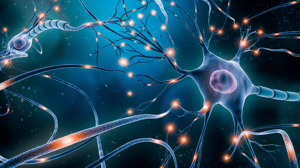Breakthrough results have been achieved by a team from Northwestern University in the USA. It is still early days for using on spinal injuries, but it seems to offer promising research potential.
Known as supramolecular polymers, these materials could bring about major changes in regenerative medicine. Their composition, which includes nanofibers and biologically active substances, actually triggers the formation of new tissues with results never seen before.
In one of the most innovative and convincing experiments conducted with these materials, researchers at Northwestern University (USA) put one of these experimental materials to the test. It contained two bioactive peptides (protein fragments) which help regenerate nerve fibres in animals with serious injuries to the spine. The polymers prevented scarring around the lesion (scar tissue is activated immediately by the body in its attempt to repair damage, but actually slows down or even prevents natural nerve regeneration, because scars block all other types of tissue). During the experiments, researchers noted that supramolecular polymers also promote the growth of blood vessels, which are needed to ensure the new tissue remains healthy. The mixture, which is only injected once, becomes self-assembling and creates a favourable extra-cellular matrix around the injury which triggers cell regeneration.
The return of myeline
As reported in Science magazine, the tests not only saw the nerve endings and the cells they derive from growing back, but also their myelination, namely the formation of myeline’s protective sheath around the fibres. The newly-formed blood vessels were also noted as functioning. The outcome saw complete resumption of nerve transmission, with movement recuperated in the space of four weeks, as also shown in a video.
What’s more, these materials disappear over time: on average they break down in 12 weeks, leaving no traces. This also makes them particularly suitable for the purpose at hand.
The American researchers are attempting to speed up their studies to receive initial approval from the Food and Drug Administration (the organisation governing research and marketing of pharmaceutical products). In the US alone, there are around 300,000 people with bone marrow injuries. Less than 3% manage to recover any basic functions, making for enormous welfare and social costs.
Developments for other illnesses
Lastly, one of the advantages offered by these materials is that their composition can be altered depending on the requirement and purpose: as mentioned before, two peptides known to help nerve cells grow back were inserted in the tests conducted on animals with spinal injuries. But in different circumstances, other types could be used, such as a type designed to encourage the formation of blood vessels.
The potential still needs to be explored, but new studies will help show just how successful they may yet prove to be.

